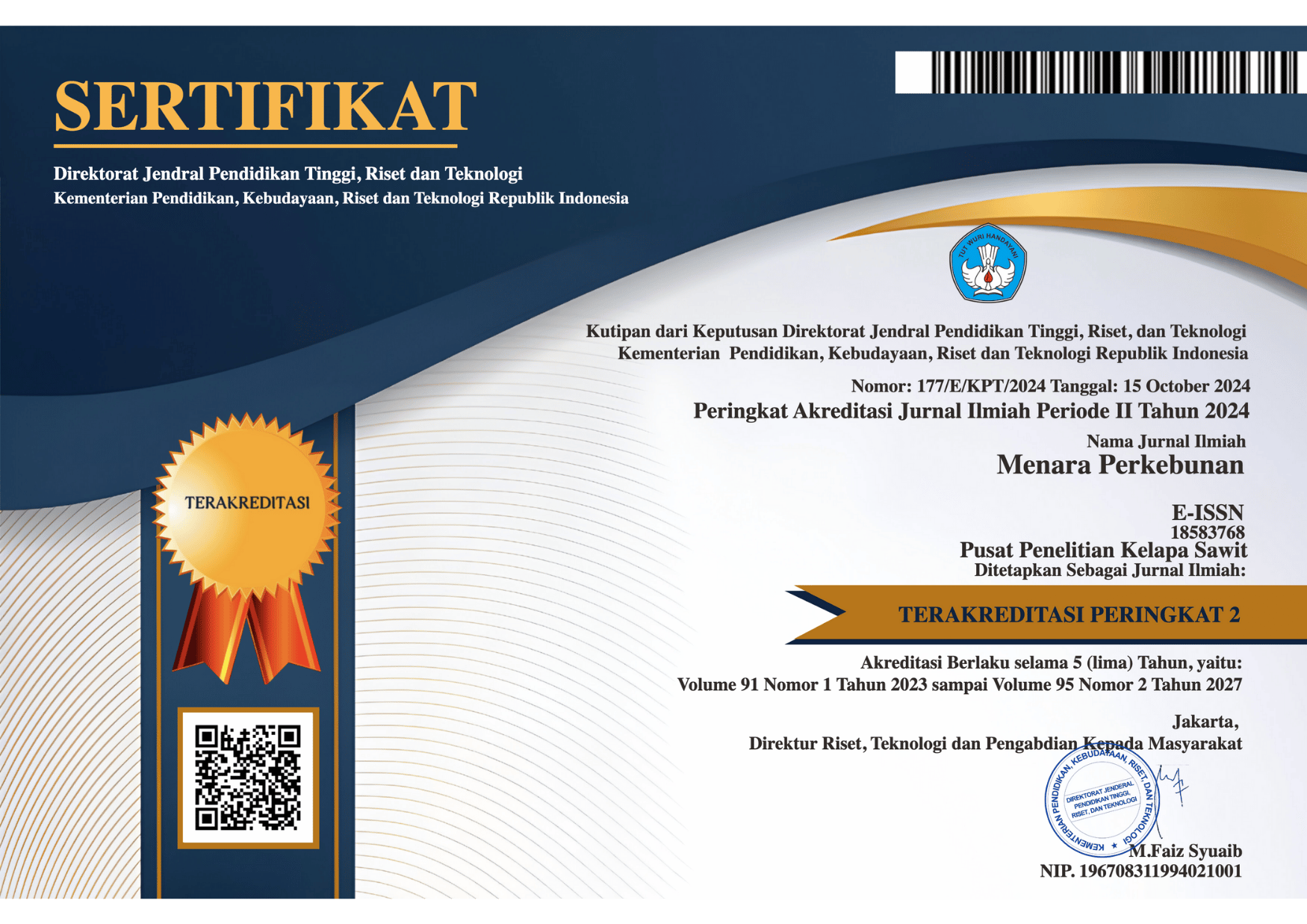Effect of enzymatic hydrolysis and nitrogen on Saccharomyces cerevisiae β-glucan production from Manihot utilissima and Maranta arunadinacea waste
DOI:
https://doi.org/10.22302/iribb.jur.mp.v91i1.508Keywords:
amyloglucosidase, arrowroot waste, cassava waste, pelletAbstract
This experiment utilised cassava (Manihot utillissima) and arrowroot (Maranta arunadinacea) wastes as the medium of propagation of Saccharomyces cerevisiae to produce β-glucan. The amyloglucosidase hydrolysed the waste, followed by fermentation in the nitrogenous medium by S. cerevisiae. The β-glucan pellet was extracted using 2% NaOH alkaline solution at 90°C for 5 hours, followed by a series of centrifugation processes. The highest glucose concentration from hydrolysis resulted from adding 57.5 mg amyloglucosidase enzyme for arrowroot waste with 95.93% conversion and 50 mg enzyme for cassava waste with 64.70% conversion. The highest amount was obtained for producing S. cerevisiae by adding 4.75 g peptone to all samples. The optimum number of cells was obtained at 1.61 x 108 colonies at t = 48 hours for arrowroot waste and 8.55 x 107 colonies at t = 48 hours for cassava waste. For β-glucan production, the highest number was obtained by using 3.99 g of peptone for cassava waste with a yield of 1.20% and by using 4.75 g of peptone for arrowroot waste with a yield of 1.23%. For β-glucan pellet, the highest number was 1.77 g L-1 (0.18 % b/v) from cassava waste medium and 1.91 g L-1 (0.19% b/v) from arrowroot waste. Mutant cells in the Yeast Extract–Peptone–Glycerol (YPG) medium produced 6.56 g L-1 (0.66% b/v) β-glucan pellet, while wild-type cells in the similar medium produced 1.84 g L-1 (0.18% b/v).
Downloads
References
Djohan, T. Bahri Anwar. (2004). Penyakit jantung koroner dan hipertensi. Medan : Universitas Sumatera Utara
Ha, C., K. Lim, Y. Kim, S. Lim, C. Kim, and H. Chang. (2002). Analysis of alkali-soluble glucan produced by wild-type and mutants. Applied Microbiology and Biotechnology 58 (3): 370-377
Kusmiati et al. 2007. β-Glucan production of Saccharomyces cerevisiae in a medium with different nitrogen sources in the air-lift fermenter. Biodiversivitas, Volume 8 nomor 4. : 253-256.
Hidayat, N., Masdiana C.P. dan Sri S. (2006). Mikrobiologi industri.Yogyakarta: CV. Andi Offset. Hal. 2-14,18-24,111-120,179-192
Purbawani, Arum Krysan. 2006. Profil suhu aktivitas amilase Aspergillus niger group isolate 32 A. Skripsi. Fakultas MIPA Jurusan Biologi Universitas Indonesia.
Ginting, Irwan. (2008). Pembuatan polimer peka lingkungan dengan polimerisasi grafing campuran N-isopropilakrilamida dan asam metakrilat (binary monomer) pada selulosa yang diekstraksi dari onggok. Lampung : Seminar Nasional Sains dan Teknologi
Lipke, PN, R. Ovalle. 1998. Cell Wall Architecture in Yeast: New structure and new challenges of bacteriology. 180 (15) : 3735-3740.
Husnil, Yuli. 2009. Perlakuan gelombang mikro dan hidrolisis enzimatis pada bambu untuk produksi bioetanol. Tesis. Universitas Indonesia
Lacoma, Tyler. 2009. How Does Sonication Work?. Diakses dari: http://www.ehow.com/how-does_5171302_sonication-work.html. Diakses tanggal: 21 Juni 2012
Priest, FG. I. Campbell. (1996). Brewing biotechnology 2nd edition. London: Published by Champman and Hall
Downloads
Submitted
Accepted
Published
How to Cite
Issue
Section
License
Copyright (c) 2023 authors

This work is licensed under a Creative Commons Attribution 4.0 International License.
Authors retain copyright and grant the journal right of first publication with the work simultaneously licensed under a Creative Commons Attribution License that allows others to share the work with an acknowledgement of the work's authorship and initial publication in this journal.













